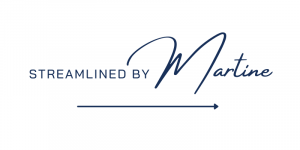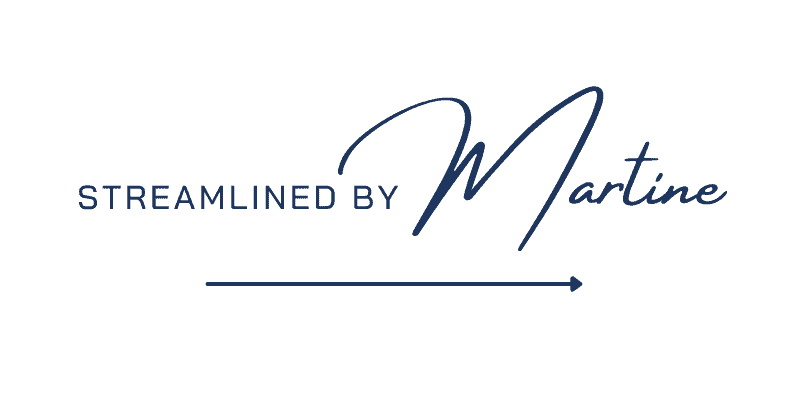
Dubsado is an automation powerhouse!
And one of my very favourite ways to cut down administrative time in a business is through workflows. While you don’t technically need to have workflows set up to benefit from Dubsado’s awesome automation, this feature is really what will flip the switch into nearly full automation. If you were thinking about hiring a virtual assistant, hang tight, because Dubsado is able to do more than you might think.
WHAT IS A DUBSADO WORKFLOW?
Available only on the Premier plan of Dubsado, workflows are an extremely powerful feature that allows you to automate the client journey. With workflows, you can send custom proposals, questionnaires, emails, contracts, and invoices, activate the client portal, create to-do’s, schedule invites, archive projects, and so much more. Workflows as a whole can be automatically triggered when you get a new lead or a proposal is submitted. Then, each step within the workflow has its own trigger which tells Dubsado when to complete the next action. These triggers can be relative to time, project progress, or from a fixed date. You also have the option to manually approve actions if you don’t want everything to be 100% automated, or if there is something that requires your attention before being triggered.
In a nutshell, Dubsado workflows are more or less the “secret sauce” of a well-planned Dubsado setup. Workflows are how you go from semi-automation to having a second “you” completing all of your administrative tasks efficiently and on time. If you’re not totally sure what Dubsado is yet or how to use the more basic components, learn more about Dubsado now!
WHAT ARE THE BENEFITS OF SETTINGS UP WORKFLOWS
As you can imagine, the biggest benefit of setting up workflows in your business is that you’re going to save yourself a TON of time. Imagine – when someone completes a proposal, rather than needing to create an invoice, contract, questionnaire, etc. each time Dubsado can pull all the information and send it automatically. When it’s time to book a monthly check-in call, Dubsado has you covered. Need to follow up on an invoice? Dubsado is already on it. Workflows make sure that everything is sent and followed up accurately and on time without you needing to be present.
Another huge benefit that often gets overlooked is the value workflows bring to the client experience. If you’ve been feeling like you’re constantly the administrative bottleneck on projects or that clients are often being left in the dark unintentionally, Dubsado workflows can help. As we’ll see in the next section, when we set up the workflows we want to map out the entire client experience to identify how to automate the tasks. With workflows, you don’t have to worry about if you sent a kick-off email or remember to send a scheduling link for a call with your client – if it’s mapped out properly, Dubsado will take care of it all automatically.
HOW TO CREATE AN EFFICIENT DUBSADO WORKFLOW
Now it’s time to get into the nitty-gritty. In the next seven steps, I’m going to explain exactly how to map out your Dubsado workflows. BUT, before we get started, I highly recommend downloading my Dubsado Setup Checklist to ensure you have everything you need before you start setting up your system.
In the checklist, I cover how to outline the type of client experience you want to offer, the content you need to send to clients, and how it all comes together. Having this all prepared before setting up your workflows will make everything so much easier!
1. MAP OUT YOUR CLIENT EXPERIENCE...IN DETAIL
The first step in building out your Dubsado workflows is to map out your client experience… In detail. If you have multiple processes for different services, start with your most important or the easiest one. We will need to map out the process for each service. This means writing down every touchpoint and task that is completed throughout the provided service. You might find it easiest to write this down with a pen and paper or in a Google document. Don’t rush this step as it sets the entire foundation for our build-out.
For each step of the process consider:
- What is being sent to the client (form, questionnaire, invoice, etc.)
- How it’s being sent (client portal, email, etc.)
- How often you follow up
- Any pre-work or post-work they need
This may be something you want to keep a running list of for a week or two while you onboard and work with new clients as new ideas may pop up as you’re actually working with clients.
2. BRAINSTORM ANY ADDITIONAL DESIRED TOUCH POINTS YOU'D LIKE TO ADD
As I mentioned above, one of the greatest benefits of setting up Dubsado workflows is the upgrade to your client experience. After you’re done mapping out your client process from start to finish, consider if there are any additional touchpoints that you want to add. Maybe you’ve been wanting to create a better offboarding or onboarding process. Or maybe you’d like an automated check-in to go out mid-month. Any of these additional touchpoints you’ve been wanting to add can be added in now while we’re mapping out our process.
3. DETERMINE WHICH STEP ALIGNS WITH EACH DUBSADO ACTION
Now that we have each part of the client experience mapped out, we want to match each step with a Dubsado action. A Dubsado action is an “action” that we want Dubsado to take in that step or when specific conditions are met (like a client completing a questionnaire or booking their monthly call). We want to make sure that each step of the client experience is matched with one of the following actions.
There are three types of actions: content-based actions, project management actions, and workflow management actions. Within each of these types there are multiple available actions to choose from:
Content-based actions
- Send email
- Send form
- Send contract
- Send primary invoice
- Create invoice
- Send appointment scheduler
Project Management actions
- Create to-do
- Change project status
- Add tag
- Activate or deactivate client portal
- Archive project
Workflow Management actions
- Pause workflow
- Hold actions until
- Start a workflow
For more information about each of the actions available within your Dubsado workflow and how they work, check out this article directly from Dubsado.
4. DETERMINE A LOGICAL ORDER FOR ALL OF THESE ACTIONS & CREATE THE CORRESPONDING MATERIAL
These will likely already be in a semi-logical order, but we want to double-check to ensure everything is in a sequential order that makes sense. From there, we need to revisit what content needs to be built out for each step. It’s time to start writing! We’ll need to create the canned emails, forms, invoices, etc. that are going to be sent throughout the workflow process. This step will take some time – don’t rush it!
5. ADD SPECIFIC TIMINGS/TRIGGERS FOR EACH ACTION
For each of the actions, it’s time to choose a trigger to ensure the action is completed exactly when we want it to be completed. There are two types of triggers: relative and fixed date triggers.
Relative triggers are the most common and dynamic. These triggers will happen whenever a specific condition is met – like a contract being signed or a proposal being filled out. You can also set relative triggers to be a fixed number of days, weeks, or months relative to a particular date or action. For example, 10 days before the project start date, a questionnaire is sent to the client.
A fixed date trigger is exactly what it sounds like. The action will be completed on a fixed date. For example, if you need to send an email on a particular day of the month, a fixed date trigger can be used.
6. CREATE THE ACTUAL WORKFLOW IN DUBSADO
Now that we have the client experience mapped out in extreme detail, the Dubsado actions mapped out, the required content/materials built out, and a plan for when each task will be triggered, it’s time to actually create the workflow! To do this you’re going to want to follow these steps:
1- Log in to Dubsado.
2- Click ‘Templates’ in the left hand menu.
3- Click ‘Workflow’ from the dropdown options of ‘Templates’.
4- Click ‘Add Workflow’ in the top right corner.
5- Start creating your workflow!
7. TEST, TEST & TEST AGAIN!
After we’ve set up our Dubsado workflow it’s so important to test it. It can be relatively easy to miss a step or trigger an action too early or too late. I recommend testing your workflow on a test client and then monitoring it closely for 2-3 clients to ensure everything is working optimally.
Ready To Get Started? I Can help!
If building all of these out feels way too overwhelming or time-consuming, you’re in luck. I offer Dubsado setups that are done for you in VIP-style over either one day or one week. If you’re looking to upgrade your client experience, regardless of your CRM platform, my client experience intensive may be for you – learn more now!
If you’re ready to dive into Dubsado, use my code ‘martine30’ for 30% off now!


